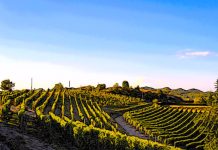A team of researchers from the University of Sydney (Australia) estimated the risk levels of environmental pesticide pollution in 168 countries.
The study (Tang et al., 2021), published in Nature Geoscience, considers 92 active substances (used in 59 herbicides, 21 insecticides and 19 fungicides) in different areas of the planet.
Global warming and the expected increase in pest invasions, in addition to the increase in demand for food, are forcing a change of course. As also invoked most recently by Foodwatch.
Deficient data
Pesticides, widely used in agriculture for more than half a century, are poisoning water and soils, biodiversity, and human and animal health.
However, the impact of agrotoxin dispersion in the environment remains difficult to estimate due to the lack of reliable data on the actual use of active substances and their residues.
Pesticides, the measure of global pollution
The researchers analyzed the areas of the planet most affected, ranking them in relation to:
- pollution risk if pesticide residues in the environment exceed certain concentrations,
- high risk, where residues exceed these values by three orders of magnitude.
Nearly two-thirds of agricultural soils at risk
The result of the monitoring is discouraging to say the least:
- 64 percent of the global agricultural area (about 24.5 million km2) is at risk of pesticide pollution from more than one active substance,
- 31% are at high risk. Of these, 34 percent are in regions with high biodiversity, 5 percent in water scarce areas, and 19 percent in low- and middle-income countries. This includes the Orange reservoirs in South Africa, Huang He in China, Indus in India, Murray in Australia, and Parana in Argentina.
Pesticide pollution in Europe
The regional analysis showed that 61.7 percent (2.3 million km2) of Europe’s agricultural area is at high risk of pesticide pollution.
The three European countries most affected, in eastern and southern Europe, are among the largest producers of agricultural commodities on the Old Continent:
- Russia (0.91 million km2),
- Ukraine (0.35 million km2),
- Spain (0.19 million km2).
Immense poisoned expanses
Of all the regions on the planet, Asia has the largest high-risk area (4.9 million km2), with 2.9 million km2 in China and 0.35 million km2 in Kazakhstan.
In contrast, farmland in Oceania has the lowest risk of pesticide pollution.
The poisonous cocktail
The cocktail effect of pesticides dispersed in air, soil and water can only come to light in cumulative terms, although a synergistic toxic effect of their mixtures is considered likely.
The data compiled by the researchers show that
- 63.7 percent of agricultural land is at risk of pollution by more than one active ingredient. This is the condition of 93.7 percent of land in Europe, 73.4 percent in North America and 69.4 percent in South America,
- 20.9% of global agricultural land is at risk of pollution by more than 10 active ingredients. China tops the list, with 8.4 percent of agricultural land (0.34 million km2) contaminated with more than 20 active ingredients of agrotoxics.
Scarce and poisoned water
Contamination of fresh water (surface and groundwater) by filtration of toxic molecules into the soil is particularly threatening in water-scarce areas.
The study places 0.62 million km2 of farmland there, 20.1 percent of which is in low- and middle-income countries.
China still emerges in the critical area for the largest area subject to water scarcity and at high risk of pesticide pollution (0.27 million km2, about 3 percent of China’s total area), with surface water appearing to be the most sensitive environmental compartment.
Biodiversity in decline
The impact of uncontrolled pesticide dispersal is also decimating biodiversity. The researchers combined pesticide risk maps with the species richness of tetrapods (4-limbed vertebrates): mammals, birds, amphibians and reptiles.
It emerges that
- 34.1 percent of global areas at high risk of pesticide pollution (about 4.18 million km2) are in regions with high biodiversity (≥323 species of tetrapods), with 1.25 million km2 being in low- and middle-income countries.
- 0.37 million km2 of areas at risk of pollution by pesticide mixtures intersect the habitat of at least one of the threatened or critically endangered amphibian species, with major hotspots located in China, Australia, Guatemala and Chile.
Added to this is the damage to wildlife caused by agricultural exploitation of areas under uncontrolled deforestation.
Researchers’ appeal
‘Although this study focused exclusively on environmental health, the effect of pesticides on human health is also an important aspect that requires comprehensive evaluation. However, this assessment on a global scale would be very complex.
‘We recommend that a global strategy for the transition to sustainable agriculture and livelihoods, with low pesticide inputs and reduced food loss and waste, be urgently established to achieve responsible production and consumption in an acceptable and profitable system,’ the study authors conclude.
Notes
(1) Tang, FHM, Lenzen, M., McBratney, A. et al. Risk of pesticide pollution at the global scale. Nat. Geosci. 14 , 206-210 (2021). https://doi.org/10.1038/s41561-021-00712-5
Professional journalist since January 1995, he has worked for newspapers (Il Messaggero, Paese Sera, La Stampa) and periodicals (NumeroUno, Il Salvagente). She is the author of journalistic surveys on food, she has published the book "Reading labels to know what we eat".








